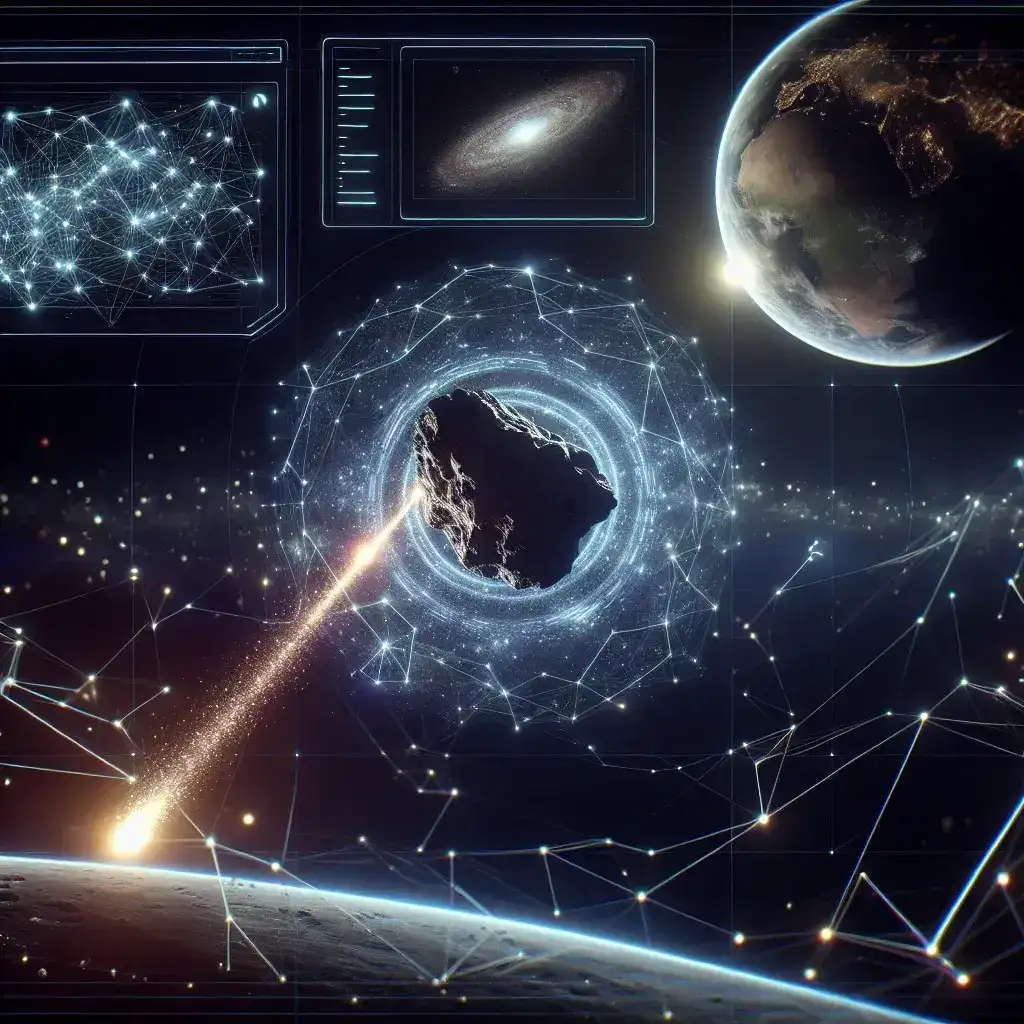Introduction
The threat of asteroids colliding with Earth has been a topic of concern for scientists and laypeople alike. With advancements in technology, especially in artificial intelligence (AI), we are now better equipped to predict the paths of these celestial bodies. This article delves into how AI algorithms are being used to predict unstable asteroid paths and their significant applications in planetary defense.
Understanding Unstable Asteroids
Unstable asteroids are those that exhibit unpredictable trajectories due to various factors such as gravitational interactions, solar radiation pressure, and their own physical characteristics. The need to monitor these asteroids is critical as even a seemingly small deviation from their predicted path could have catastrophic consequences.
The Role of AI in Asteroid Prediction
In recent years, AI has emerged as a powerful tool in various fields, and asteroid prediction is no exception. Here are some ways AI contributes:
- Data Analysis: AI algorithms can analyze vast amounts of data from telescopes and space missions much faster than human researchers can.
- Pattern Recognition: Machine learning models are capable of identifying patterns in the movement and behavior of asteroids, which can be critical for accurate predictions.
- Real-Time Processing: AI systems can process real-time data, allowing for immediate updates to asteroid trajectory predictions.
AI Algorithms in Action
Various AI algorithms are being employed in the study of asteroids. Let’s explore some of the prominent ones:
1. Neural Networks
Neural networks are a vital part of deep learning techniques. They can model complex relationships and are particularly useful for predicting the orbits of unstable asteroids by training on historical data. With sufficient training, these networks can predict potential future paths with impressive accuracy.
2. Genetic Algorithms
Genetic algorithms simulate the process of natural selection to solve optimization problems. In the context of asteroid prediction, they can help refine the trajectories by selecting the best-fitting parameters from a pool of possibilities, thus enhancing prediction accuracy.
3. Bayesian Networks
Bayesian networks utilize probability to manage uncertainty in predictions. They can incorporate new data as it becomes available, updating the predictions dynamically, which is crucial for the unpredictable nature of asteroids.
Historical Context
Historically, the prediction of asteroid paths relied heavily on telescopic observations and mathematical modeling. For example, the discovery of the asteroid belt in the 19th century marked the beginning of our understanding of these celestial bodies. However, the methods were limited by the available technology, often resulting in significant uncertainties.
With the advent of computer technology in the late 20th century, scientists began to employ more sophisticated algorithms for trajectory calculations. Nevertheless, it wasn’t until the 21st century, with the rise of AI, that predictions became significantly more precise and efficient.
Current Developments in AI Algorithms
Recent developments have showcased the effectiveness of AI algorithms in predicting asteroid paths. For instance, NASA’s Near-Earth Object Observations (NEOO) program has begun integrating machine learning to enhance its tracking capabilities. Researchers have reported success in predicting trajectories with an accuracy that was previously unattainable.
Case Study: The 2019 OK Asteroid
The 2019 OK asteroid is a prime example of AI’s predictive capabilities. Discovered only a few days before its close approach to Earth, AI algorithms were employed to calculate its trajectory quickly. Despite initial uncertainties, the predictions proved accurate, demonstrating the potential of AI in planetary defense.
Planetary Defense Applications
AI’s role in predicting asteroid paths extends far beyond academic interest; it has critical applications in planetary defense. Here are some noteworthy applications:
- Early Warning Systems: With improved prediction models, AI can help develop early warning systems that notify authorities of potential impact threats.
- Mitigation Strategies: Understanding asteroid paths allows scientists to propose mitigation strategies, such as redirecting an asteroid using kinetic impactors or gravity tractors.
- Public Safety:** Accurate predictions ensure that governments can prepare and respond to potential threats, safeguarding lives and property.
Advantages of AI in Asteroid Prediction
The integration of AI into asteroid path prediction offers several advantages:
- Speed: AI algorithms process data and generate predictions at unprecedented speeds, essential for timely interventions.
- Accuracy: The ability to analyze complex datasets allows for more precise predictions, reducing the margin of error.
- Scalability: AI systems can easily scale to incorporate new data sources, improving the robustness of predictions.
Challenges and Limitations
Despite its advantages, the use of AI in predicting unstable asteroid paths is not without challenges:
- Data Quality: The effectiveness of AI algorithms is highly dependent on the quality of the input data. Inaccurate or incomplete data can lead to erroneous predictions.
- Interpretability: Many AI models, particularly deep learning neural networks, operate as ‘black boxes,’ making it difficult to understand how predictions are made.
- Resource Intensive: Developing and training AI algorithms can require significant computational resources, which may not always be available.
The Future of AI in Planetary Defense
The future of AI in predicting unstable asteroid paths is promising. As technology continues to advance, we can expect even more innovative solutions for planetary defense:
1. Improved Predictive Models
Future research may lead to the development of even more sophisticated predictive models that can account for a wider range of variables affecting asteroid trajectories.
2. Global Collaboration
International collaborations, like the European Space Agency and NASA’s joint missions, will likely enhance data sharing and improve predictive capabilities globally.
3. Public Engagement
As awareness of planetary defense grows, public engagement will become crucial. AI-powered simulations can be used to educate the public about asteroid threats and the measures being taken to mitigate them.
Conclusion
AI algorithms are revolutionizing the way we predict unstable asteroid paths, providing critical insights that enhance planetary defense applications. As we continue to harness the power of AI, we are improving our ability to safeguard Earth from potential asteroid impacts, marking a significant advancement in our quest to protect our planet.
With ongoing research and collaboration, the future looks bright for the field of planetary defense, ensuring that we are better prepared for whatever the cosmos may throw our way.

